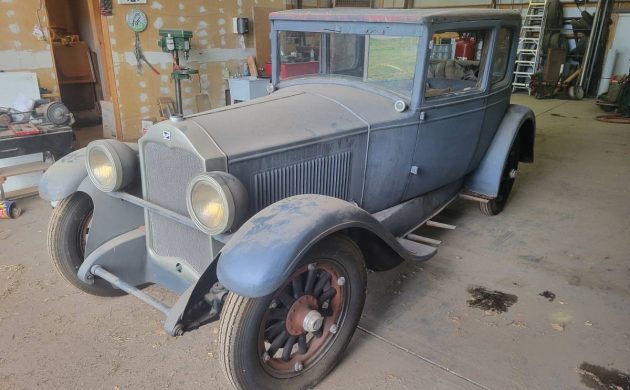
While it is sad to see that, as a whole, prewar car values have been headed south for some time. The only commonly seen vehicle bucking that trend is Ford’s Model A. If you look at this glass as half full rather than half empty, that means there are a lot of opportunities out there if you don’t have your heart set on a blue oval on the grille. One such opportunity is this 1928 Buick Master Six Model 48 for sale on Craigslist in Bennett, Colorado. This partially restored Buick is advertised as 95% complete and the undercarriage and running gear have already been rebuilt. With a $6,500 asking price, would this be a more distinctive alternative to the run-of-the-mill Model A Ford? Thanks to Gunter K. for the tip!
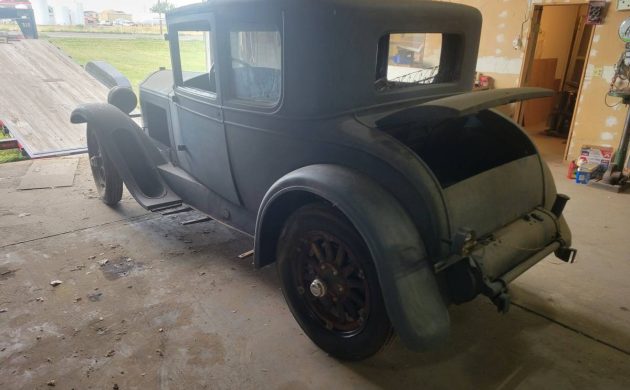
Rolling back the clock over 100 years, the automobile industry of the 1920s was filled with a cornucopia of different makes and models. Customers, especially those with luxury car money, had a lot of good cars to choose from. Over at General Motors, the company had solidified its “tier system” of marketing. Buyers at the low end of the financial spectrum were steered towards purchasing a Chevrolet. High-end customers could choose the Cadillac of their choice. Anyone in the middle could fall in line at the Pontiac, Oldsmobile, Buick, or LaSalle dealership.
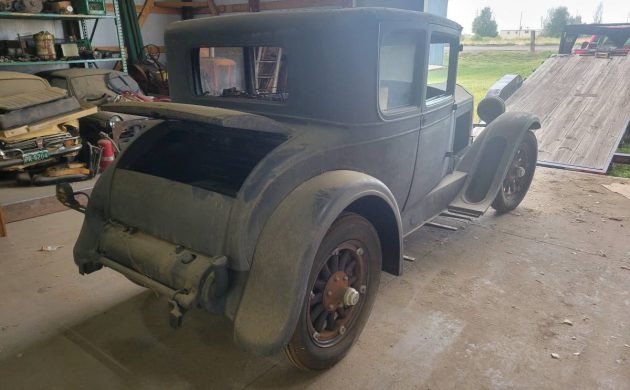
If they visited more than one dealership, eagle-eyed customers might have seen that GM was already in the business of reducing costs by sharing parts across divisions. The tradition of brands having their specific engines would last until the modern era, but bodies were fair game. There was a reason for this. Sharing body stampings among brands freed up the enormous presses that stamped out body parts and allowed for the centralization of some aspects of production to factories specifically dedicated to body production. For GM, that was Fisher Body.

One of GM’s most respected brands was Buick. By the 1920s, Buick’s reputation had been solidified as a well-built but understated luxury car not quite on the cutting edge of style, price, and performance as Cadillac. Buick bodies and chassis were sometimes shared with primarily Oldsmobile, but the inline-six-cylinder engine was Buick’s own. Their line was divided into two parts: the Standard Six and the Master Six. While the fastest way to differentiate the two was the wheelbase length, the Master Six was also more luxurious.
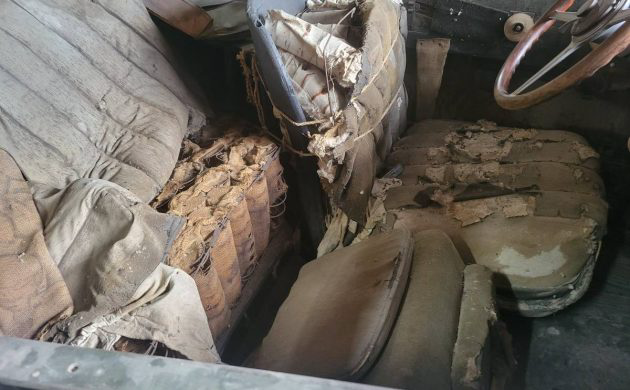
All of the competition in Buick’s price segment led to some interesting marketing. Buick’s President Harry Basset sent a Buick touring sedan on a long-distance trip from dealer to dealer to promote the brand’s reliability and build quality. Even more unusual, an arrangement was made where Buicks were partially built in the United States and shipped to Osaka, Japan to be reassembled and sold. Buick also ended up selling a few cars to China’s last emperor in 1924. While that may seem like a routine transaction, this established Buick as a favored automobile in China due to the emperor’s imperial status. That status continues to keep Buick in the top tier of brands in China even today as their memory and habits are deep-rooted in the past.
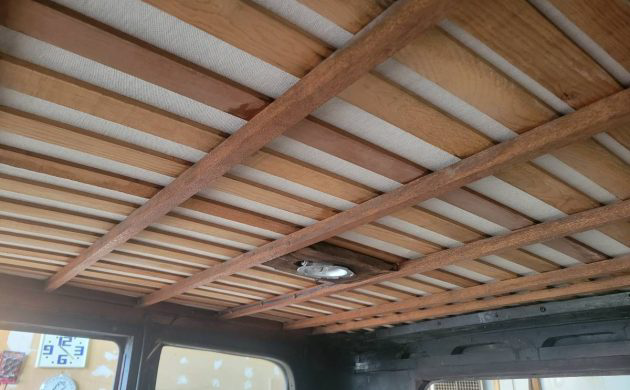
While Buick was certainly an upscale car in the twenties, why are prices for survivor cars today on the low end? Part of it is that the people who interacted with these cars when they were new or used are no longer with us. Much of what people know of Buick is the reputation of the brand today, which is remarkably similar to Buick’s reputation in the twenties. Still, you would think there would be a demand for a luxurious, well-built car among people who like twenties era vehicles. However, one look at ads here and elsewhere proves that Model A prices are setting the tone for that era.

While that may be an issue for some, others would logically see the price of this partially restored 1928 Buick Master Six Model 48 as an incredible opportunity to acquire a distinctive automobile that was arguably more advanced mechanically than a Model A Ford. Powered by a rebuilt 274 cubic inch overhead valve inline six, this car is capable of higher cruising speeds than a Model A due to its 77-horsepower rating. Both cars have mechanical drum brakes. However, the Buick has much more braking surface which is offset somewhat by a higher overall weight.
One gathers from the ad that this car was in the process of being restored when work stopped. As previously stated, the engine, transmission, rear end, and chassis have already been rebuilt and restored. Parts availability on twenties cars is an ever-worsening issue. Having that problem already handled for you is a blessing.
The situation on the body and the rest of the parts and pieces is a bit less certain. In the ad, the car is listed as 95% complete and the spare parts are thoughtfully laid out for the photographs. Finding whatever is missing may prove to be problematic but not insurmountable. A body service manual and additional documentation and literature are included in the sale to assist in finishing this restoration.
As a whole, this is one of those appealing project cars that could be a great vehicle for someone at a very reasonable price. You could easily make the point that the machine work for the work done so far would run far more than the $6,500 asking price. The body, which may be that of an opera coupe, shows no sign of being anything other than sound on the surface. What is questionable is the wood framework underneath the body panels. Any damage, if there is any, would be evident after the interior is completely stripped out of the car.
A similar Buick sold at a Gooding and Company auction in 2011 for $18,700. Chances are that the same car sold at auction today would sell for less due to diminishing interest in vehicles of this era. Decent Model A Fords are going for north of $10,000 now, with more desirable body styles bringing $20,000-30,000 for good examples. If you take away the advantages of a more robust aftermarket for parts and the incredible club network that Model As enjoy, this Buick looks to be an incredible bargain in comparison. The factors that made it a higher-priced car then still apply today.
What do you think? Would you rather have this Buick, or would you lean towards putting a Model A Ford in your garage? What do you think it will cost to finish this car? Please leave your thoughts in the comments.


You know, pretty tough to follow that monster truck, from the ridiculous to the sublime, but I look at this and think, how many younger people actually think this is worth anything. Be like them using a rotary dial phone, which my parents still had well into the 90s. As said many times, the only appeal in the future, is if it was in perfect shape, and even then, going to be a tough sell.
That aside, can you just imagine, who had this car in the beginning of the Depression? I read, this car cost between $1400-$1999, when a Model A was 1/3 that, so it had to be someone successful, say a doctor, or boss man, or worse. Crime was rampant, and many a gangster chose a Buick. Just watch vintage “The Untouchables” shows. I can just see younger generations scoffing at this relic, but at one time, ESPECIALLY during the depression, you pulled up in a Buick like this, you meant business. I just don’t know what will happen to these great, severely outdated cars that need a total restoration.
Agree. My biggest concern is that future collectors will have limited garage space and cars like this will be left out to rot
Not really, three car garages are pretty common in lots of subdivisions, you are starting to see some newer houses with a third stall designed to part a full size motor home with a longer bay with a correspondingly taller door ceiling.
Steve R
Steve, I’m going to have to side with Fred here. In my small town, all the rage today are these modular homes going up, or “tiny” homes on a small lot, if any, and not a lot of garages going up. One situation, maybe 20 units, everyone parks in a designated lot, and walks to the home, not unlike an army barrack. Maybe a small storage shed, if any, hardly a place to do ANYTHING. Bedroom communities, and inundate our landscape today.
Luckily, I live in a free state, in a small city, where it’s unusual to NOT see a three car garage, or in most cases, an out building that houses cars, trucks and/or yard machines. The problem with the younger car enthusiasts is affording them. When Uncle Sugar steers you towards living in tenement housing, with solar powered heating, and electric everything, by offering “incentives” paid for by your neighbors? It may be hard for them to resist.
Cool find! We have a lot of 3 and 4 car garages in the area. A newer phenomenon is “motor district” which are garage/condos for auto enthusiasts.
Back to prewar cars. My mother found one of her father’s photo albums that spanned roughly 1927 to 1940. It included several cars/trucks I can’t identify, as well as campus pictures from University of Cincinnati (he was an engineering student/graduate), construction site pictures from Cincinnati/Northern Kentucky and finally pictures from his home town of Manitowoc, Wisconsin.
The album is a great piece of family history (college into early marriage) as well as a peek into life at that time.
Unfortunately periods of collecting “age out.”
They make good shelf space in the garage to put stuff on the 20 years later you discover there’s a car under all that stuff then you put it on barn finds. Pretty cool huh..
I am a younger person (25) and have been in to cars since about I can remember. I love prewar cars and this one is certainly no exception. The main handicap (imo) for this era of car is the acceleration and braking speed. I almost daily a ’65 Comet with a three speed, and the few seconds it takes to shift from first to second makes me nervous just about every time. Careless and impatient drivers who seem to have no idea that a manual car takes another 2 seconds get EXTREMELY close to the back bumper and then fly around at the first chance they get. Prices are falling for prewar cars and I’d love to have one, but it gives me pause when I think of the carelessness and lack of respect of drivers in my medium sized Southern city. It will be very interesting to see how 1950s and older cars pan out in the next few years.
Hi David, thanks for sharing your views, they certainly are atypical of most younger folks and you bring up a very valid point. People today want instant gratification, stopping is the most annoying part of driving, and can’t wait to get back “up to speed”. I was used to it in my semi, you wouldn’t believe what I’ve seen with people trying to get around me. Today we have cameras to record that, but I get that in my Jeep. The 1-2 shift is slow going, and people just don’t understand why I’m going so slow. I suppose that’s when it’s fun to have a 454, and blow THEIR doors off, but that just adds to the aggression in todays driving, and it’s great fun, pulling up behind them at the next light. I’m tempted to beep the horn the second it turns green, but probably get shot doing so. In that regard, I actually HATE driving today, and coming from someone who has MILLIONS of miles, it’s a shame. .
Good to know someone young has interest in the gems from the depression era. You simply need to drive exclusively in neighborhoods or secondary roads. If a guy in Michigan could use a Model A for a year with no problem this would be even more effective.
Cool alternative and would be more desirable to me personally than a Model A, but much like the Mustang, you can practically build a Model A from a catalog. I’d be worried about sourcing parts for this and having to restore the existing parts I couldn’t find. Then again, the price for this Buick is nice…
If I had to make a choice between this Buick and THREE comparable Model A’s I would take the Buick without even going to look at the Fords. I’m a Ford man but having also owned a ’51 Buick Super I still prefer the Buick shown here. There are very often A’s promoted here on BF but I never even look at the pics, or read the blurb. They are like backsides, everybody has one!
1920’s and 30’s. Restored vehicles are parade cars, wood spoke wheels and mechanical brakes are not practical in today’s world not to mention a wood frame Fisher body. I know I have 30 Pontiac coupe, no rust but Termites eat the wood framing ! If you want to drive it build a Street rod out of it.
I’ve seen fewer pre-war vehicles than ever before at car events and I almost never see one on the road. And that includes the Model A. Twenty or so years ago they were ubiquitous. Nostalgia alert: I remember when the pre-war car drivers hung a sign out back “caution slow shifting “ when driving in traffic. Ah the old days of double clutching. BTW, all is not lost yet. There are some young people who do know how to double clutch. My son is one of them. Their focus is on completely different vehicles and I have learned to appreciate them. As we all know; things change. I have to say that I agree with David R about driving your old car in modern traffic. I mostly drive on back roads these days in my 1952 Plymouth and you can count on eventually having a SUV on your a** even though you’re moving along well above the speed limit. If I can safely move over to let them by I will. A lot less stress. For certain you will always find me in the right hand lane on freeways. My old car likes sixty but not much more. But it is not all bad. It is nice to get waves and smiles from some folks. So hopefully there are still those who appreciate the oldies besides we certified car nuts. I hope someone finishes restoring this very worthy old Buick. But I regretfully believe that the people who are willing and able to do this are rapidly becoming very scarce. GLWTS.
Gen Z can put a electric motor in it
My girls (SIL and niece) don’t like ’em,
but I certainly do! Buicks have always
been well engineered and soundly built. Truth be told, I’d really rather have a Buick than the Kia K-5 we have
now. $300 for an oil change? $150 to change a tire? Give me a well built
Buick any time! Something I can understand and work on with no trouble at all. As for this era Buick,
they make great street rods too. Saw
2 of ’em at the first ever Street Rod
Nationals in Peoria Illinois in 1970. One was a ’25 Town Car, and the other was a Master coupe like this one. The town car ran a 401 nailhead
mated to a T400 tranny. While the coupe ran a 350 Buick with a matching 350 gear box. Both were very tastefully done with the town car
looking almost bone stock outside.
Outside, the coupe was mildly rodded
sporting Ansen mags and a custom
rear tire cover out back for the spare
For a young motorhead, seeing those
2 Buicks made me appreciate the work and ingenuity that went into
building those fine cars. Get this car
drivable, make it safe, and enjoy it.